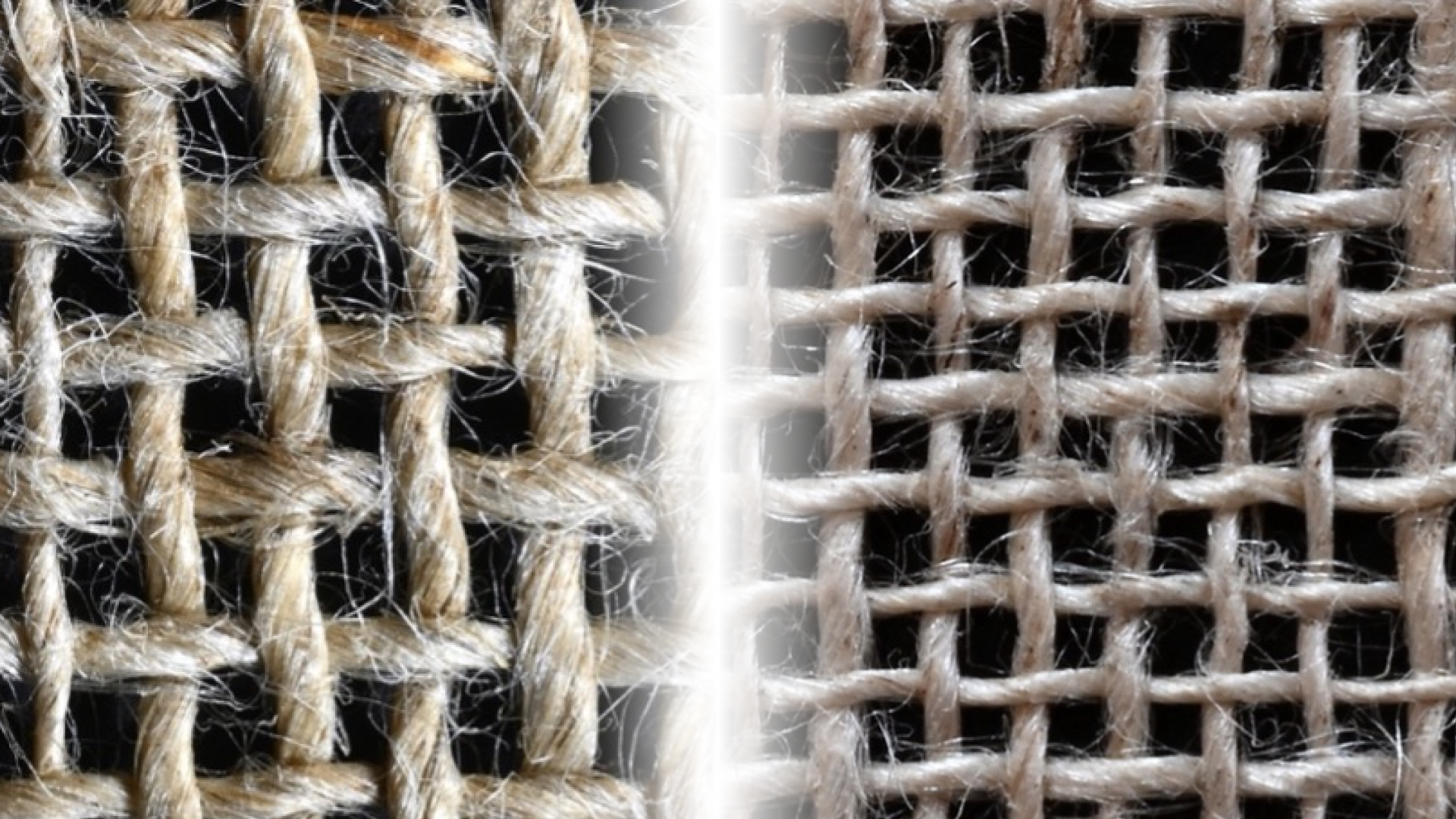The “patta” and “pattina” are linen canvases originally used for sieving cheese, defined “rarole”, because of the open weave texture. The distance between the yarns, and the resulting low crimp, provides good dimensional stability and low shrinkage. When good quality linen is used, tensile mechanical properties can be excellent also at low stresses. The two textiles have low shrinkage upon wetting, therefore decating is not necessary and very often it is not required in preparation for lining. The traditional liners approach was more based on a preliminary washing to remove impurities, than on an actual decating on strainer.
Patta and pattina are the traditional textiles used for the Roman paste lining techniques. The method was originally intended to create a rigid structure behind the original canvas, with low out of plane flexibility. In order to achieve this, until the 1990s the method implied using a stratification of textiles with increasing thickness: a cotton gauze in contact with the original canvas, the pattina and then the patta. In more recent years, the pattina is often used alone, as it has thinner yarns and a higher cover factor. It is very convenient with the use of a viscous glue-paste adhesive.
Patta is a very open weave textile (7 warps and 6 wefts /cm), with low crimp yarns. The most frequent version of the textile has a weight of 170 g/sqm and is 0.56 mm thick. The secant tensile modulus at a strain of 0.047 is 510 MPa in warp, 938 MPa in weft, if calculated using only the fiber fraction for the cross section, or 192 MPa in warp, 139 MPa in weft if “object related” using the actual textile’s cross section. Warp and weft yarns are described in the following table.
| Patta yarns | Warp | Weft |
| Width | 0.81 | 0.37 |
| thickness | 0.37 | 0.41 |
| twists per meter | 143 | 160 |
| crimp % | 2.3 | 2 |
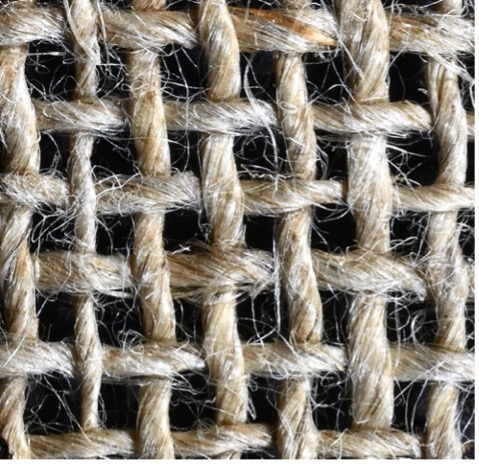
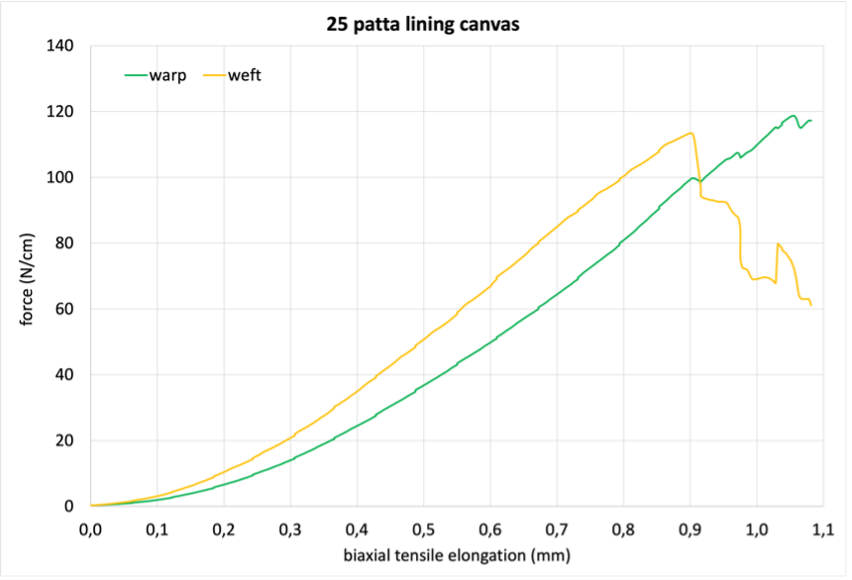
An image of the textile (1 cm x 1 cm), and the biaxial tensile response plot
Pattina is a relatively open weave textile (9×9 yarns /cm), with high modulus in warp and weft because of the low crimp in the yarns. The most often used version of the textile has a weight of 150 g/sqm, is 0.44 mm thick. The secant tensile modulus at a strain of 0.047 is about 1 GPa (1015 MPa in warp, 967 MPa in weft), if calculated using only the fiber fraction for the cross section, or about 200 MPa if “object related” using the actual textile’s cross section. Warp and weft yarns are described in the following table.
| Pattina yarns | Warp | Weft |
| width | 0.42 | 0.46 |
| thickness | 0.31 | 0.32 |
| twists per meter | 195 | 292 |
| crimp % | 2.94 | 1.58 |
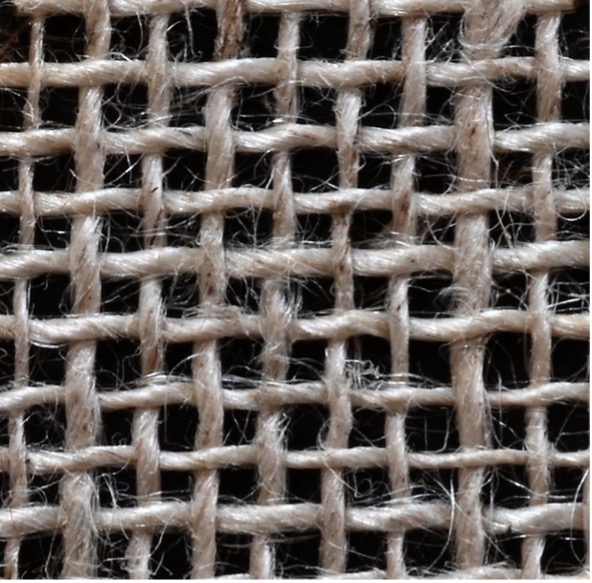
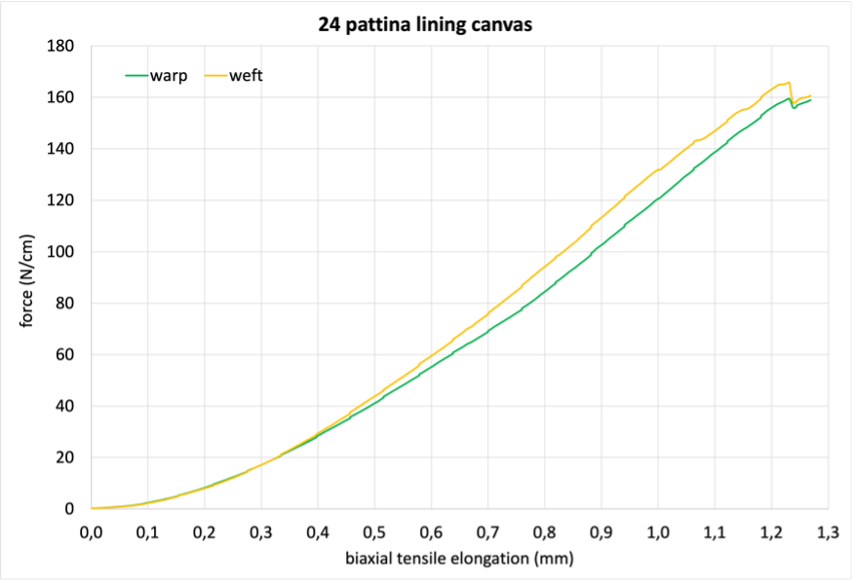
An image of the textile (1 cm x 1 cm), and the biaxial tensile response plot
